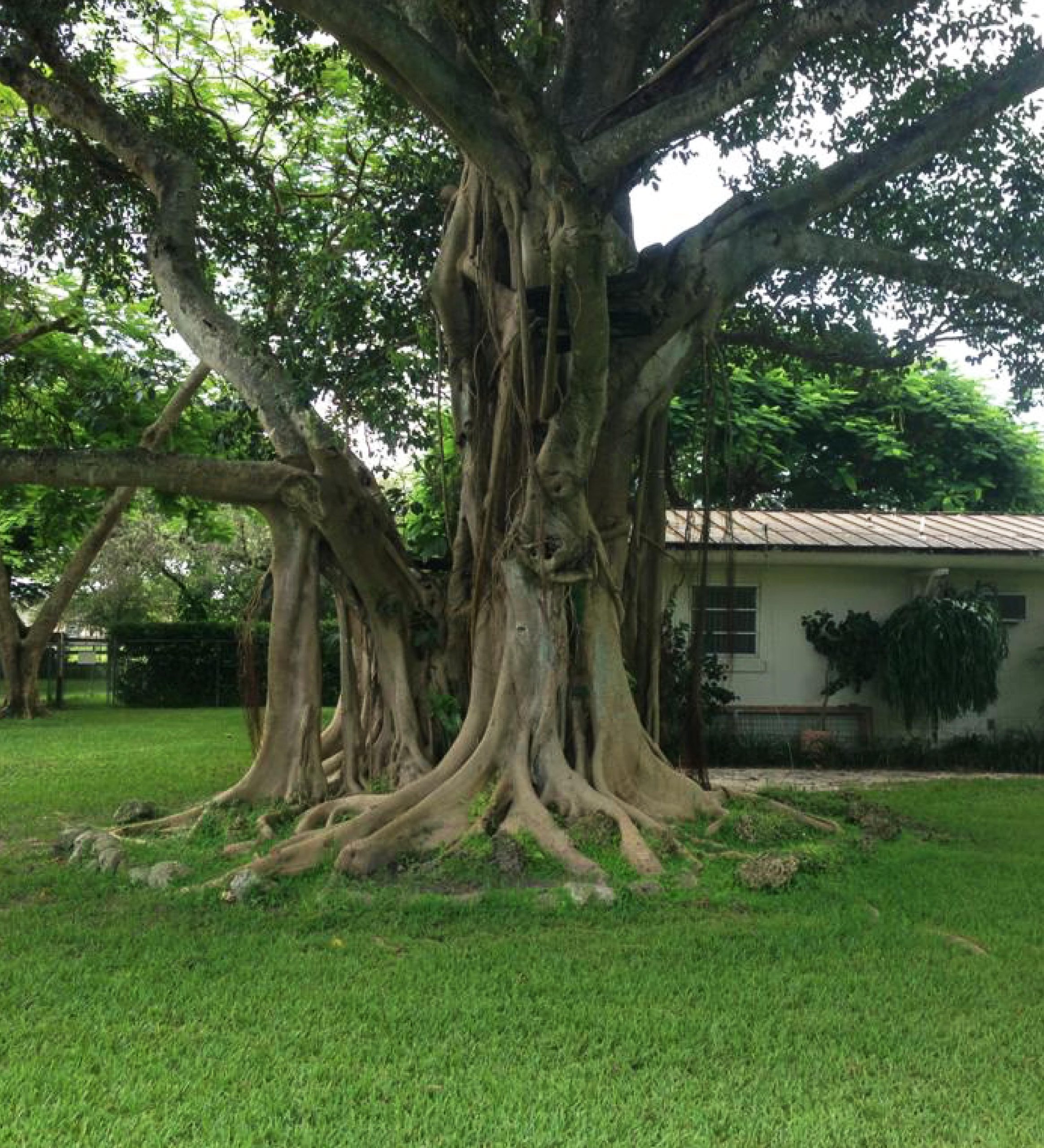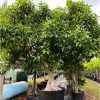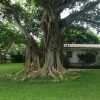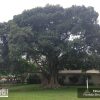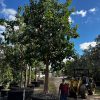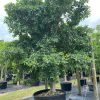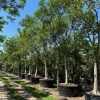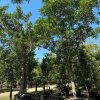Description
Strangler fig tree description
Ficus Aurea tree, commonly known as the Florida strangler fig or the golden fig, is a species of fig tree native to southern Florida, the Bahamas, the Caribbean, and Central and South America. It is a member of the family Moraceae, which also includes other fig species; like the Ficus Religiosa (Sacred Fig).
It is a fast-growing tree that can reach up to 98 feet tall in ideal conditions, although it usually grows to around 33-66 feet tall. The tree has a broad, spreading crown with a dense network of aerial roots that can extend several meters from the trunk. These roots can eventually grow into the ground and encircle the host tree, leading to the eventual death of the host. This habit is why it is called a “strangler fig.”
Ficus Aurea flowering and foliage
Ficus Aurea (Florida strangler fig), is classified as a deciduous tree, meaning that it sheds its leaves during the winter months. Its trunk is typically smooth and grayish-brown, and it can have a diameter of up to 4.9 feet. The bark is thin and can peel in large flakes.
The branches of ficus aurea tree are long and sprawling, often reaching down to the ground. The leaves are simple and alternate, with an elliptical shape and pointed tip. And can grow up to 9.8 inches in length; they are shiny and dark green in color. The underside of the leaves is paler and has a slightly fuzzy texture. Besides, leaves have a tough and leathery texture, which helps them to withstand the high winds and salt spray in coastal areas.
Furthermore, the Florida strangler fig produces small, inconspicuous flowers that are pollinated by wasps. The flowers develop into figs, which are technically not fruits but inverted flowers that develop into a fleshy structure. The figs of Ficus aurea are yellow-orange when ripe and contain many small seeds. They are an important food source for many animals.
Strangler fig cultivation
The tree prefers well-draining soils that are slightly acidic and rich in nutrients. It grows best in areas with high humidity, plenty of rainfall, and plenty of sunlight. The tree is hardy and can tolerate drought, salt spray, and occasional flooding. It is common in coastal areas, swamps, and hammocks.
Landscape applications for the Florida strangler fig
The Florida strangler fig tree is a versatile and attractive tree species with a variety of landscape applications in South Florida and the Caribbean. One of the most common is as a street tree due to its ability to withstand high winds, salt spray, and occasional flooding. It can also help to reduce urban heat island effects by providing shade and cooling the air. That’s why It has become a common tree in San Juan, Puerto Rico, where you can sight it in many urban areas.
The Florida Strangle Fig is popular as a specimen tree in landscape designs because of its unique look, which makes it an excellent focus point, particularly in expansive gardens and parks. Furthermore, because it can withstand strong winds and sea spray, is great for coastal landscaping. It can be used to build a storm barrier and an erosion barrier from nature.
Finally, the tree is a great option for a variety of landscape applications. Due to its capacity to grow in tropical and coastal conditions. If you’d want to see one of the most well-known examples of Ficus aurea used in a landscape, you may visit the Miami Beach Botanical Garden in South Florida. As the garden enjoys a number of mature Ficus aurea trees that shade the area and give it a tropical vibe.




